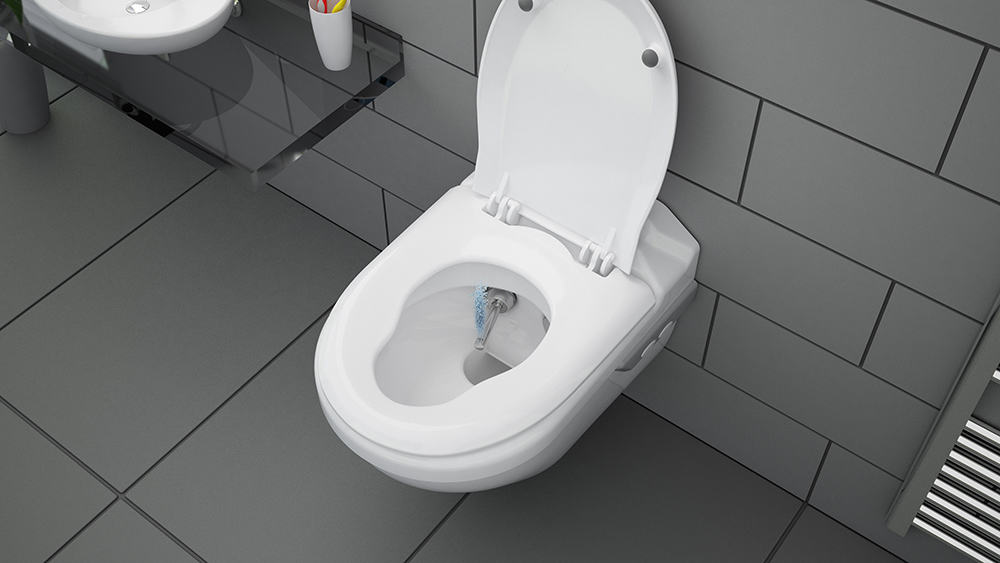The pursuit of absolute cleanliness and hygiene is a constant challenge in public restrooms and residential bathrooms alike. With the spread of pathogens being a significant concern, the advent of germ resistant toilet materials has become a crucial development in sanitation technology. These innovations not only promise to reduce the transmission of diseases but also enhance the overall user experience in restroom facilities.
This article delves into the fascinating world of germ resistant toilet materials, examining their significance, the science behind their effectiveness, and their role in the future of bathroom design.

The Importance of Germ Resistance in Toilets
Toilets, being high-contact surfaces, are hotspots for germs and bacteria. The importance of germ resistance in these fixtures cannot be overstated, especially in public restrooms where the risk of cross-contamination is high. Germ resistant materials provide a protective barrier that minimizes the likelihood of bacterial growth and spread.
Incorporating these materials into toilet design is not just a trend but a necessity. As public awareness of hygiene continues to grow, the demand for toilets made from germ resistant materials is expected to increase, making them a standard in modern sanitary ware.
Types of Germ Resistant Materials
Antimicrobial Coatings
One of the most effective ways to make toilets germ resistant is through antimicrobial coatings. These coatings contain agents that actively kill or inhibit the growth of microorganisms. Silver-ion coatings, for example, are widely used due to their long-lasting antimicrobial properties.
These coatings are applied to toilet surfaces, creating a hostile environment for germs and providing a continuous layer of protection. For a closer look at how innovative toilet designs are incorporating such technologies, visit Innovative Toilet Designs.
Non-Porous Materials
Non-porous materials such as vitreous china and ceramic are naturally resistant to germs due to their smooth surfaces that prevent bacteria from adhering. These materials are easy to clean and maintain, making them ideal for use in toilet manufacturing.
Advancements in ceramic technology have further enhanced the germ resistance of these materials, as discussed in Innovative Ceramic Toilet Technology.
Advanced Plastics
New-age plastics infused with antimicrobial properties are being developed to combat germs in toilets. These plastics are not only lightweight and durable but also prevent microbial colonization, making them an excellent choice for toilet seats and lids.
The Science Behind Germ Resistance
The effectiveness of germ resistant materials lies in their ability to disrupt the life cycle of bacteria and viruses. Antimicrobial agents work by penetrating the cell walls of microorganisms, ultimately killing them or inhibiting their ability to reproduce.
This scientific approach ensures that the materials remain effective over time, providing a sustainable solution to hygiene-related concerns in bathrooms.
Implications for Public Health
The use of germ resistant toilet materials has far-reaching implications for public health. By reducing the incidence of infections transmitted via contact with contaminated surfaces, these materials play a critical role in safeguarding community health.
Moreover, the integration of germ resistant features into public restrooms can significantly enhance the perception of cleanliness, encouraging more people to use these facilities without hesitation. For more insights into how technology is transforming public toilets, check out Public Toilets Technology.
The Future of Toilet Materials
The future of toilet materials is poised to be even more innovative with the integration of smart technologies. Concepts such as self-cleaning surfaces and automated disinfection systems are being explored to further enhance bathroom hygiene.
For an in-depth look at how smart toilets are revolutionizing the industry, visit Smart Toilet Technology.

FAQ Section
What are the most common germ resistant materials used in toilets?
Common germ resistant materials include antimicrobial coatings, non-porous ceramics, and advanced plastics infused with antimicrobial properties.
How do germ resistant materials work?
These materials work by incorporating antimicrobial agents that disrupt the life cycle of bacteria and viruses, preventing them from growing and spreading.
Are germ resistant materials effective in public restrooms?
Yes, germ resistant materials are highly effective in public restrooms as they minimize the risk of cross-contamination and enhance the overall hygiene of these facilities.
In conclusion, the development and implementation of germ resistant toilet materials represent a significant advancement in the field of sanitation. As these technologies continue to evolve, they promise to provide safer, cleaner, and more hygienic restroom environments for all.
This article contains affiliate links. We may earn a commission at no extra cost to you.






